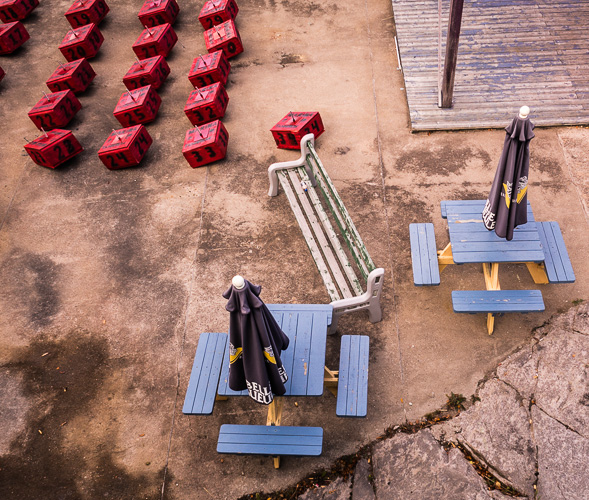I’ve been on a 17-day trip to Canada. Boston to Montreal by car, Montreal to Gloucester, Mass by boat, with stops at Québec City, Gaspe, Prince Edward Island, several places in Nova Scotia, and Campobello Island. Trying to keep my travel weight down, I took an M240 and no SLR.
Fire Escape, Summerside, Prince Edward Island. 50mm ‘lux, 1/1000 @ f/8, ISO 200
Actually, I took two cameras, bringing along an RX-1 in addition to the Leica. However, the Sony didn’t survive even the first leg of the trip, giving me an error indication (E:61:00), and refusing to focus when first I unpacked it. So I used the M240 exclusively for the whole trip. I’d brought along three Leica lenses: the 18mm f/3.4 Super-Elmar ASPH, the 50mm f/1.4 Summilux ASPH, and the 90mm f/2 APO Summicron ASPH. All proved to be stellar performers, but each demanded its own set of techniques to get the best results (more on that later). If I’d have known the Sony was going to die, I wouldn’t have had such a big gap from wide angle to normal lens. Most likely I’d have taken the 24mm Super-Elmar instead of the 18mm. Why not the 16/18/21 Tri-Elmar? From one perspective it sounds perfect for the M240. Ditch the Frankenfinder. Don’t restrict yourself to the click-stopped focal lengths; use it like a zoom. That part’s great. But the 18mm SE is just so crisp….
I took along a Zeiss optical finder for the 18mm SE, and both the Leica and the Olympus EVFs (they are very light, and have a tendency to fall off the camera when you’re pulling it out of the bag, so I figured it wouldn’t hurt to have a spare).
Buoys and Tables, Tadoussac, Quebec. 18mm SE, f/8 @ 1/125, ISO 200.
Spending a long time with a new camera, photographing every day in unplanned and varied surroundings with only the most general objectives is not a prescription for making great art, and I certainly didn’t. However, it’s a great way to take the measure of a camera, especially one with a unique set of capabilities like the M240.


Leave a Reply